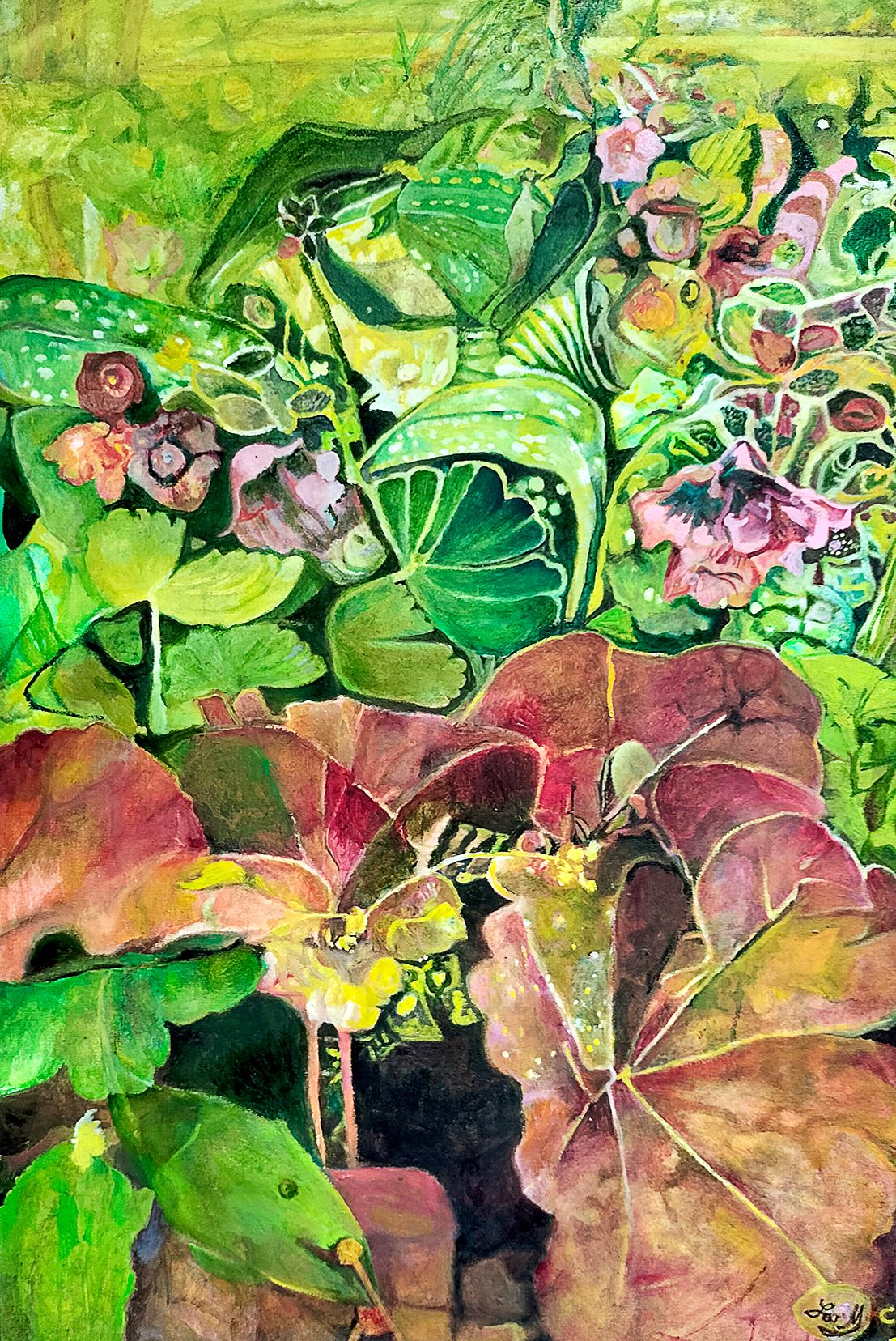How a look into Lourdes Cabrera's 'Earth Garden' stuns viewers
AT A GLANCE
“Earth Garden,” reflected her vision of life, harmony, and hidden chaos.

Visual art artist Lourdes Cabrera never imagined she’d mount an exhibit at this stage in her life. "I consider myself a newbie in this undertaking,” she said. “But after much thinking, I decided to continue my passion for art. There is no retirement in art.”

Her third solo exhibit, “Earth Garden,” was a revelation, with lush blooms layered with watchful eyes and human forms blending with petals. The works seemed beautiful at first glance, but upon closer look, the viewer felt tension from the coexistence of light and shadow, of peace and unrest. “A friend once sent me many pictures of flowers,” Lourdes shared. “They were beautiful, but I noticed the eyes and human forms. I thought, ‘only artists could do such things.’ It triggered something dormant within her - a calling she had set aside long ago.

Lourdes studied Fine Arts at the University of Santo Tomas with her husband. After they married, she decided to take a step back from art and focused on supporting her husband’s creative career. “He worked without letup,” she said. “I stayed home and gave him all the time to be the artist.” While she briefly pursued tutoring in illustration, painting remained a quiet longing - until now.

“The creative process felt like love at first sight,” Lourdes explains. “From preparing the canvas to choosing the colors, it was exciting from beginning to end.” She repurposed her husband’s old canvases, coating them in white acrylic before starting. “At first, I was just excited to paint again, I thought, being childless, I finally had time.”

“Earth Garden,” reflected her vision of life, harmony, and hidden chaos. “It represented everything in this life,” she says. “A study of how we think and move through the world. Flowers are positive creations, but their negativity lies hidden behind that beauty. They represent the suppressed parts of us - the things we might carry a lifetime without realizing.

Reactions to her work varied. “An old friend of my husband’s came to the show and asked, ‘Why only now?’” Lourdes shares. “Another viewer said, ‘I’ve attended many exhibits but your paintings are different.’ He asked about the eyes - what they symbolized. When I explained, he admitted he was fearful. But that was never my intention.”

For Lourdes, the eyes and forms represented the animalistic and emotional sides of humanity - parts we don’t always acknowledge. “Flowers are often associated with softness and femininity,” she said. “But in my case, they carried hidden truths.”

Through “Earth Garden,” Lourdes peeled back the petals of her own life and invited viewers to do the same. “We all have dual lives,” she reflected. “We show what we want others to see, but we hide the rest. I simply shared what I had been holding onto.”
In doing so, she showed that no matter the pause, the art within us can still bloom when the time is finally right.

“Earth Garden” ran until April 19 at ThomBayan Arts and Crafts, Bangkal, Makati City.








